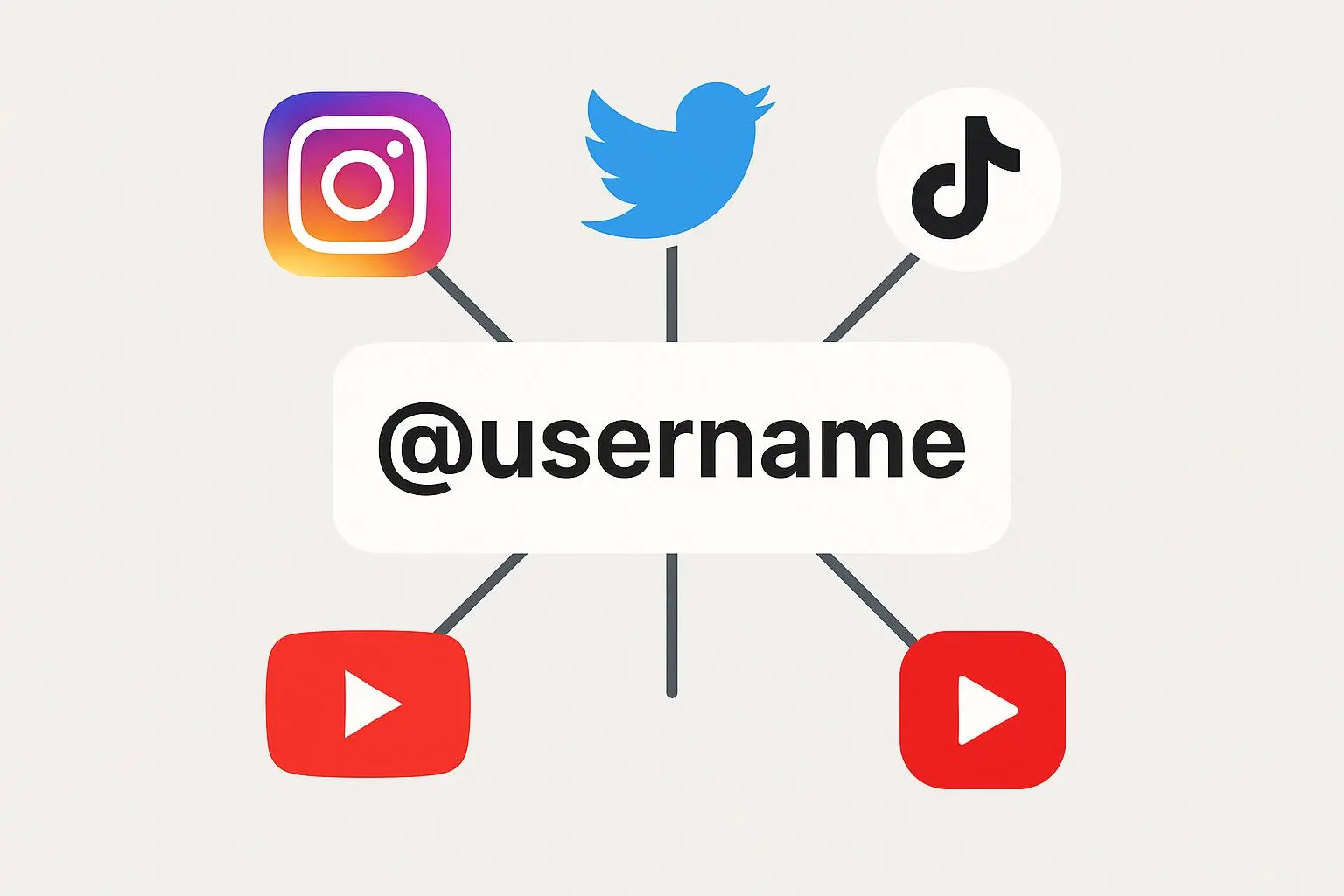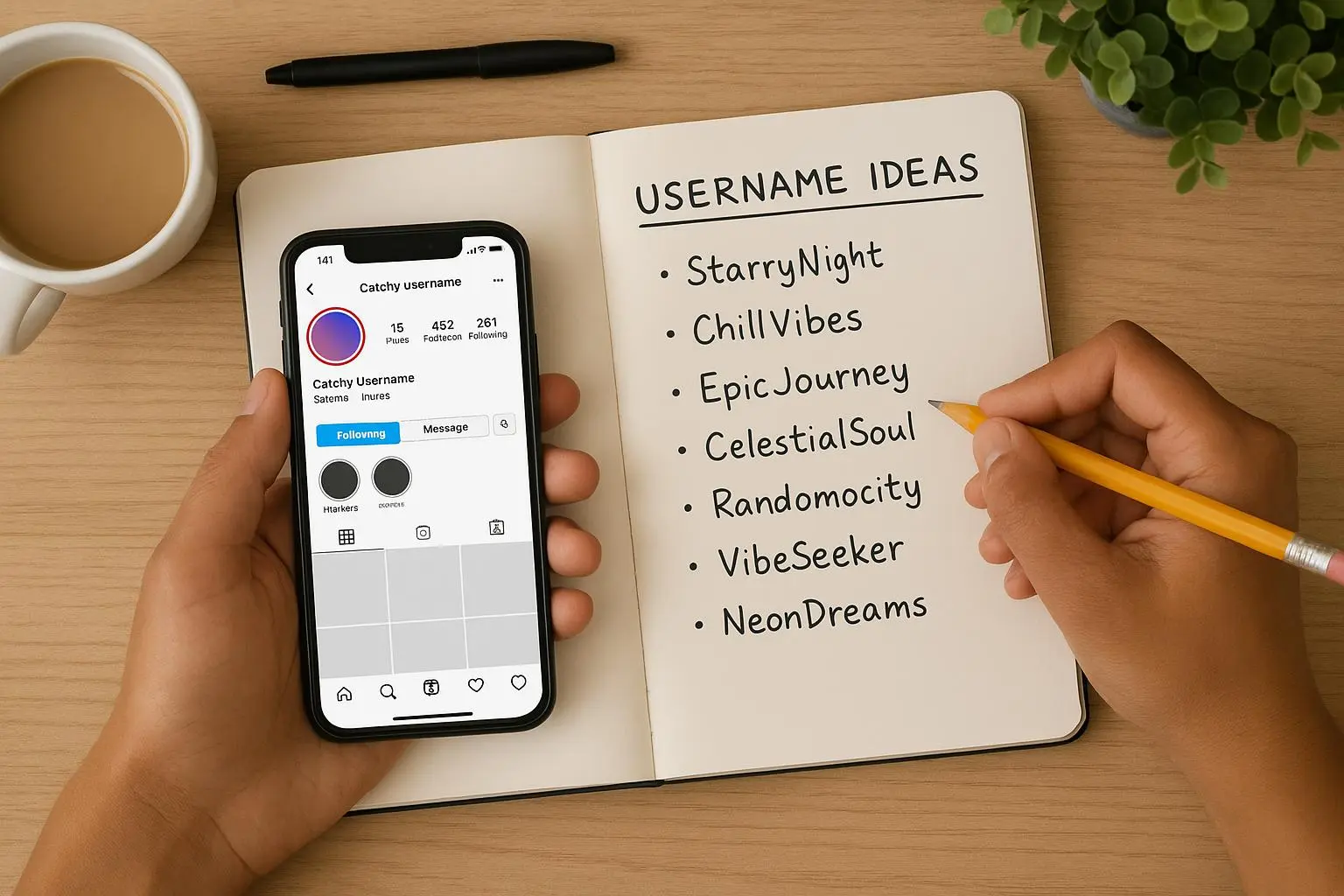
Why Your Username Matters: Build a Searchable Brand
Published on 10/3/2025 • 8 min read
Your username isn’t just a handle. It’s a tiny, powerful asset that shapes discovery, trust, and your online story. I learned this the hard way when I reclaimed five platform handles that matched my brand in under two weeks and then watched organic bio-page traffic tick up over a few months.
A consistent, memorable username helps people find you, remember you, and trust you. It also makes it easier to share your handle aloud without stumbling. In short: your username can be foundational to a personal brand that grows with you.
Start with why — your brand identity, not just a handle
Before you reach for a generator or domain checker, pause and ask three core questions:
- What do I want people to think of when they find me?
- Am I building a personal brand around my name or around a niche/idea?
- How might this identity evolve in five years?
I’ve coached people who chose edgy handles and others who used their full names. Both can work, but the choice matters. For authors, consultants, and speakers, a real name carries authority. For lifestyle creators or niche projects, a creative brand or niche-anchored handle can signal purpose quickly.
Think of the username as a compact elevator pitch — it should signal who you are, what you do, or at least be memorable enough to spark curiosity.
The golden rules of a great username
These small decisions pay off in discoverability and longevity:
- Keep it short and simple (aim for fewer than 15 characters).
- Make it pronounceable — if you can say it easily, others can repeat it.
- Avoid unnecessary punctuation and long number strings.
- Be distinctive but not cryptic.
- Future-proof it — choose a name that can grow with you.
Small choices here have measurable effects. In one case I helped a client shorten their handle and standardize across platforms; within two months their profile mentions increased, and referral traffic rose.
Strategies that actually work (and examples I’ve used)
Use your real name
- Classic and searchable. If your name is common, add a profession or middle initial (JohnADoe, EmilyWrites). Best for consultants, authors, and speakers.
Combine your name with your niche
- Clarifies what you do and improves SEO (CoachCathy, CodeWithChris). Best for creators and niche experts.
Create a unique brand name
- Invented names (PixelPioneer, MindfulMornings) can scale but require narrative and domain checks. Best for blogs and creative projects.
Use alliteration or rhyme
- Rhythm helps recall (MarketingMinds). Works well for lifestyle and creative brands.
Keep it future-proof
- Avoid highly specific tags (KetoCoach2020 blocked growth). Will this still represent you in five years?
Practical three-step routine (copyable)
Brainstorm core keywords
- Write name variations, niche terms, and value words without editing.
- Example for a productivity writer named Mia Chen: MiaChen, MiaWrites, ProductiveMia, FocusWithMia.
Generate and check availability
- Use a multi-platform checker to test handles across sites at once.
- Check domains early; good .coms move fast.
Review, refine, and lock it down
- Read your top 3 aloud. Ask: easy to spell? represents my brand? Get an outside opinion.
- Secure handles and the domain immediately.
I used this approach to reclaim five handles in 10 days and saw a measurable uplift in cross-platform discovery.
What to do when the exact name is taken
Don’t default to long numbers or complex punctuation. Try small, strategic tweaks:
- Prefix: TheJaneDoe, RealAlexLee.
- Niche/function: JaneDoeDesign, AlexLeeWrites.
- Middle initial: JaneMD, AlexRLee.
- Short location/industry: JaneDoeNYC, AlexLeeTech.
Keep changes minimal and consistent across platforms. A suffix like “HQ” or “Co” can look intentional and professional.
Technical and legal checks you can’t skip
Do these before you fall in love with a handle:
- Trademark search: Use USPTO.gov for U.S. checks and WIPO.int for international marks. A basic search can reveal conflicts early.
- Google it: Look for negative or confusing associations.
- Domain availability: Check .com and relevant TLDs; register early.
- Username availability across key platforms: Instagram, TikTok, X, YouTube, LinkedIn — focus on the platforms that matter for your goals.
If you get a cease-and-desist: pause use immediately, consult a lawyer, and consider negotiating or rebranding. Early legal advice often costs less than a forced rebrand after growth.
Tools (current as of June 2024) and how I use them
- Rizzman’s Social Media Username Generator (rizzman.ai) — free tool that suggests variants and checks cross-platform availability quickly.
- Namechk and similar multi-checkers (namechk.com) — useful for exhaustive availability checks; free tier with paid options for bulk features.
- Lean Domain Search (leandomainsearch.com) — pairs keywords with available .com domains.
Note: Tools change — always confirm current pricing and features on each site.
Sample 30–60 minute micro-playbook (exact sites and steps)
- 0–10 min: Brainstorm 10–20 keywords (name variants, niche words, adjectives).
- 10–25 min: Run batch checks
- Visit rizzman.ai and paste keywords to generate handle ideas and cross-platform availability.
- Open namechk.com for additional platform checks.
- 25–35 min: Domain check
- Use leandomainsearch.com or a registrar (namecheap.com) to test .com availability.
- 35–45 min: Quick trademark scan
- Search USPTO.gov (Trademark Electronic Search System — TESS) and WIPO.int for obvious conflicts.
- 45–60 min: Final review and secure
- Read top 3 aloud; ask a friend. If clear, register the best domain and claim top platform handles.
Commands and quick search terms to use in steps above:
- Google: site:twitter.com "ExactHandle" OR "YourName" — to see current use.
- USPTO TESS: enter the exact handle (in quotes) and related keywords.
This sequence gets you from zero to a secured handle and domain in under an hour.
Tips for keeping consistency without losing creativity
- Use a base handle and tiny platform-specific variants.
- Keep visuals and bio language consistent across profiles.
- Use a clear display name where possible (full name vs handle).
My own setup uses a full-name handle on LinkedIn and a niche-anchored variant on Instagram, with identical avatar and bio phrasing — that consistency reduces confusion and increases follow-through.
Common pitfalls and quick fixes
- Trendy names that age: prefer clarity.
- Excessive numbers/underscores: avoid for trust.
- Not securing domains: buy defensively.
- Ignoring trademarks: run the basic checks.
- Choosing a name that boxes you in: pick a broader handle if you might pivot.
If you already have fractured handles
- Pick a primary handle (the best available and most representative).
- Update priority channels first (where your audience is largest).
- Use bios to bridge gaps and link to a central hub (link-in-bio or site).
- Migrate content gradually and notify your audience.
I migrated my handles once and my audience adjusted within a month after consistent explanations, a pinned post, and a logo refresh.
Final thoughts — pick something worth committing to
Invest 30–60 minutes in brainstorming, run a fast availability check, and secure the handles and domain. The payoff is measurable: clearer discovery, fewer impersonation risks, and a consistent identity that supports partnerships and long-term growth.
A well-chosen username is more than a label. It’s the shortest form of your story.
If you want a next step: brainstorm three core keywords right now, pop them into a username generator, and see what’s available. Clarity and consistency beat cleverness most days.
Micro‑moment
I spent 20 minutes last week consolidating my display name across two key platforms. Seeing the same handle everywhere instantly reduced friction when fans tried to mention me in posts. It felt small, but the confidence boost was real.
References
Ready to Optimize Your Dating Profile?
Get the complete step-by-step guide with proven strategies, photo selection tips, and real examples that work.


